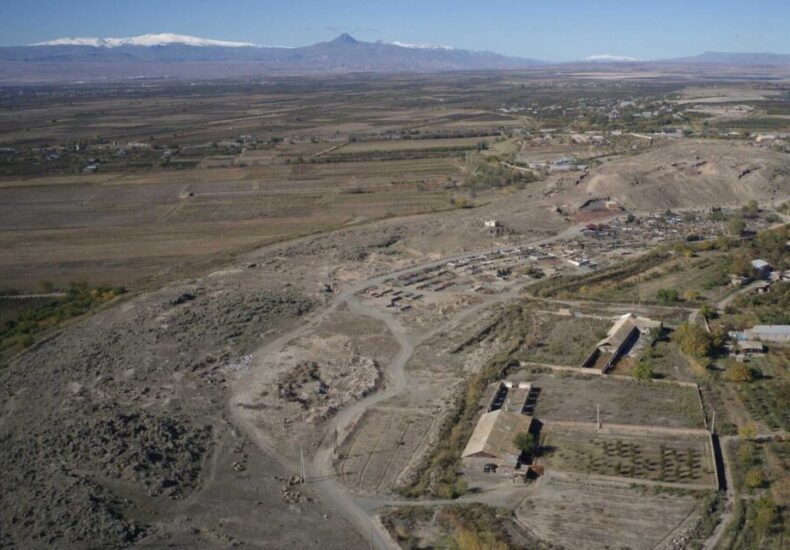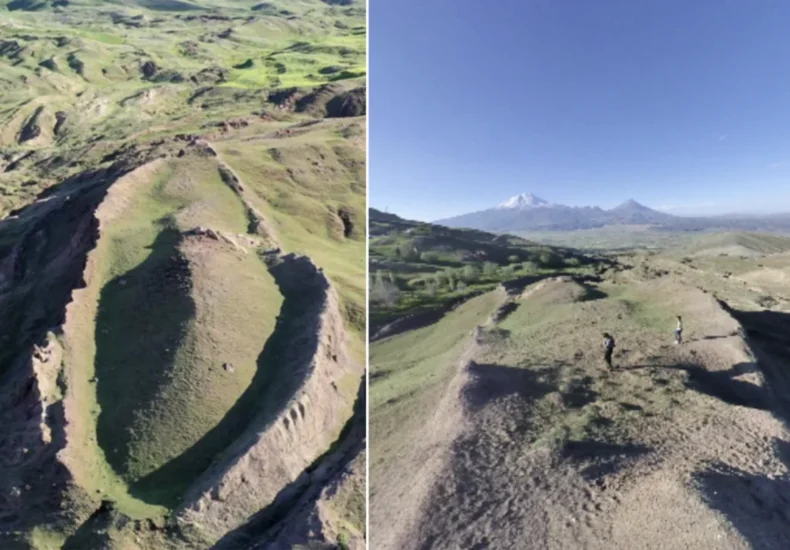
2,500-Year-Old Idol Unearthed in Armenia’s Urartian Fortress May Reveal Secrets of a Vanished Faith
Archaeologists have uncovered a mysterious 2,500-year-old idol carved from volcanic stone inside the ancient Urartian fortress of Argishtikhinili, Armenia — a city once ruled by the kings of Urartu. The figurine, preserved beside a stone chest within a Late Iron Age house, is believed to have served a protective or ritual function, shedding new light

Is This Noah’s Ark? Exciting Discovery in Türkiye Sparks Debate
A boat-shaped mound in the Durupinar Formation near Mount Ararat in Türkiye has ignited interest among experts who believe it may be the fossilized remains of Noah’s Ark. This formation, studied by an international research team since 2021, is thought to have been submerged during a catastrophic flood approximately 5,000 years ago. Durupinar Formation: Clues

Visitors will be able to visit the hole made by the meteorite that fell on Mount Ararat 1 million years ago
Work is underway to open the meteorite pit, which was formed when a meteorite hit Mount Pain, Türkiye’s largest mountain, 1 million years ago, to visitors. Mount Ararat (Ağrı Dağı) is also known as the mountain where the ark of the prophet Noah ran aground after the flood. Mount Ararat is an extinct volcano with

Scientists examined the remains believed to belong to Noah’s Ark, and here are the results
On September 11, 1959, Captain İlhan Durupınar, a map engineer, flew in an aircraft belonging to the Turkish Armed Forces (TSK) to map the Eastern Anatolia Region and captured images of the remains claimed to be associated with Noah’s Ark. The region where these alleged remains of Noah’s Ark are located is between the villages
